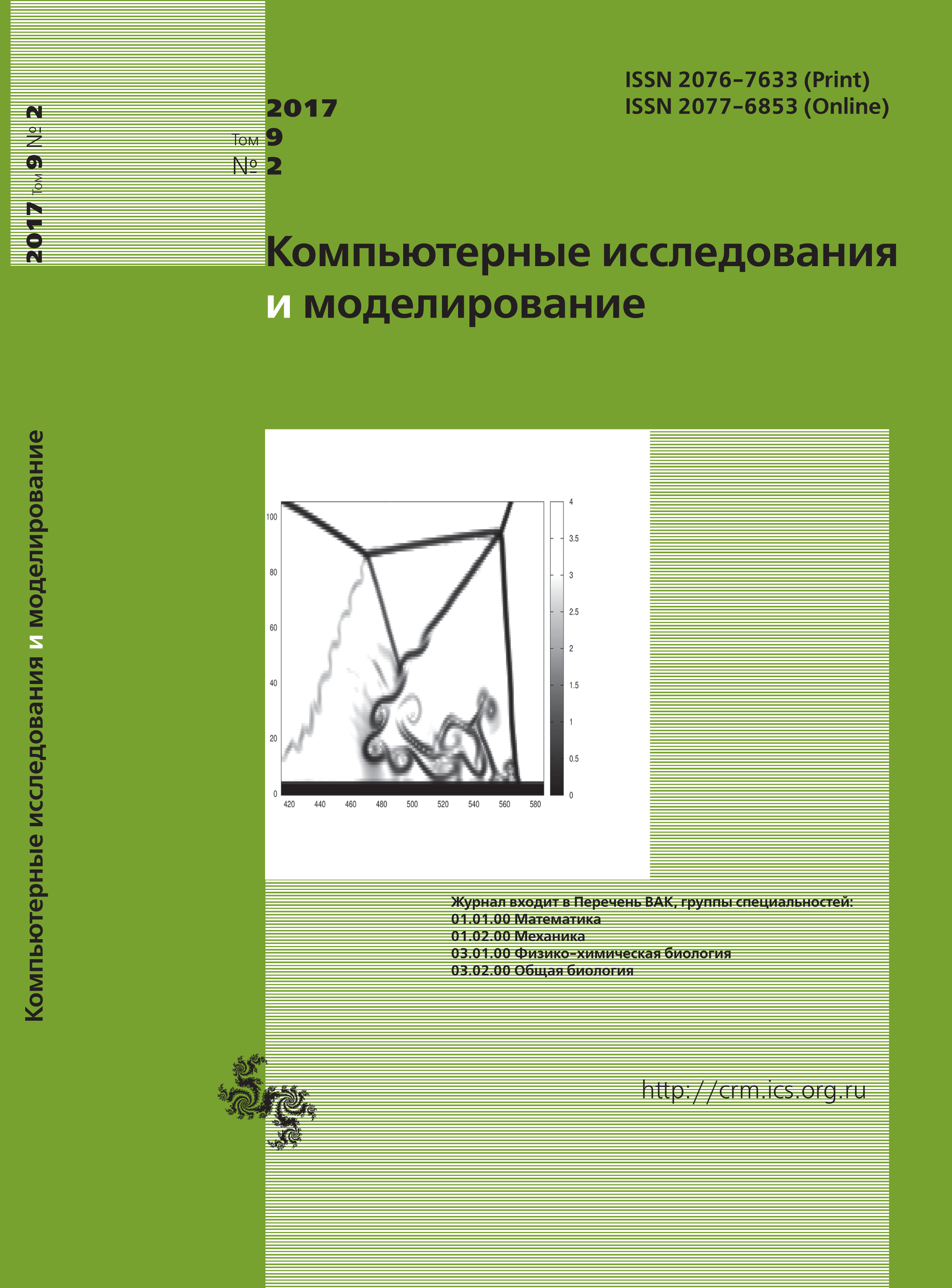All issues
- 2025 Vol. 17
- 2024 Vol. 16
- 2023 Vol. 15
- 2022 Vol. 14
- 2021 Vol. 13
- 2020 Vol. 12
- 2019 Vol. 11
- 2018 Vol. 10
- 2017 Vol. 9
- 2016 Vol. 8
- 2015 Vol. 7
- 2014 Vol. 6
- 2013 Vol. 5
- 2012 Vol. 4
- 2011 Vol. 3
- 2010 Vol. 2
- 2009 Vol. 1
Cellular automata methods in mathematical physics classical problems solving on hexagonal grid. Part 1
The paper has methodical character; it is devoted to three classic partial differential equations (Laplace, Diffusion and Wave) solution using simple numerical methods in terms of Cellular Automata. Special attention was payed to the matter conservation law and the offensive effect of excessive hexagonal symmetry.
It has been shown that in contrary to finite-difference approach, in spite of terminological equivalence of CA local transition function to the pattern of computing double layer explicit method, CA approach contains the replacement of matrix technique by iterative ones (for instance, sweep method for three diagonal matrixes). This suggests that discretization of boundary conditions for CA-cells needs more rigid conditions.
The correct local transition function (LTF) of the boundary cells, which is valid at least for the boundaries of the rectangular and circular shapes have been firstly proposed and empirically given for the hexagonal grid and the conservative boundary conditions. The idea of LTF separation into «internal», «boundary» and «postfix» have been proposed. By the example of this problem the value of the Courant-Levy constant was re-evaluated as the CA convergence speed ratio to the solution, which is given at a fixed time, and to the rate of the solution change over time.
Copyright © 2017 Matyushkin I.V.
Views (last year): 6.Indexed in Scopus
Full-text version of the journal is also available on the web site of the scientific electronic library eLIBRARY.RU
The journal is included in the Russian Science Citation Index
The journal is included in the RSCI
International Interdisciplinary Conference "Mathematics. Computing. Education"







